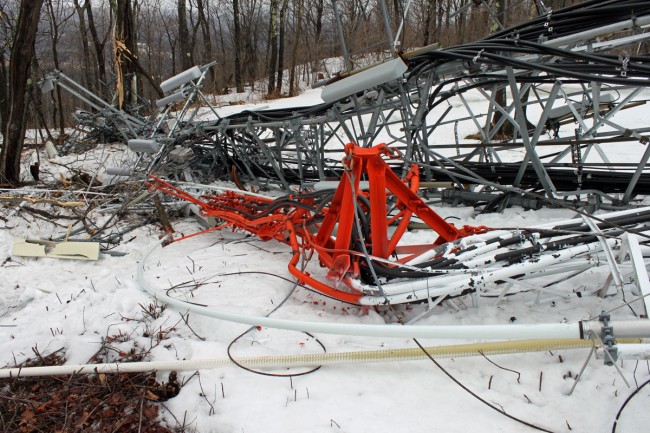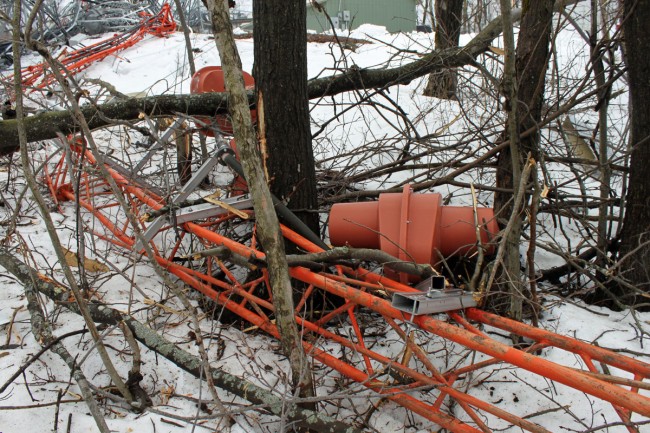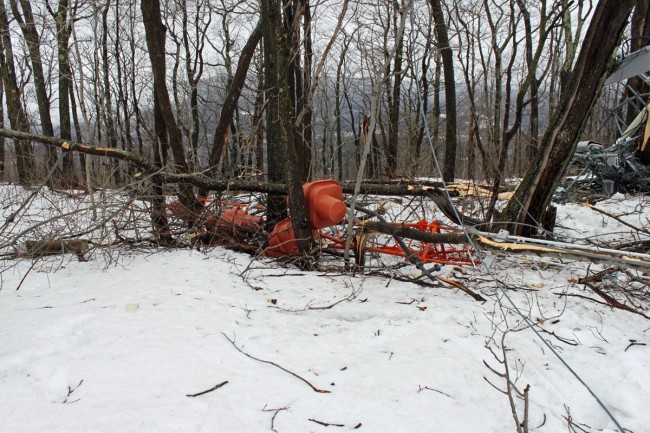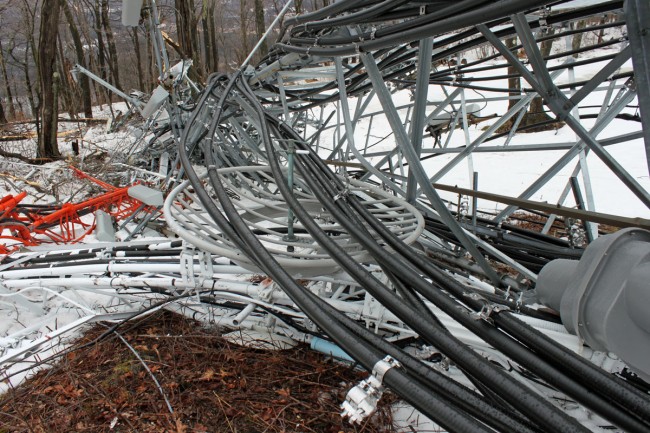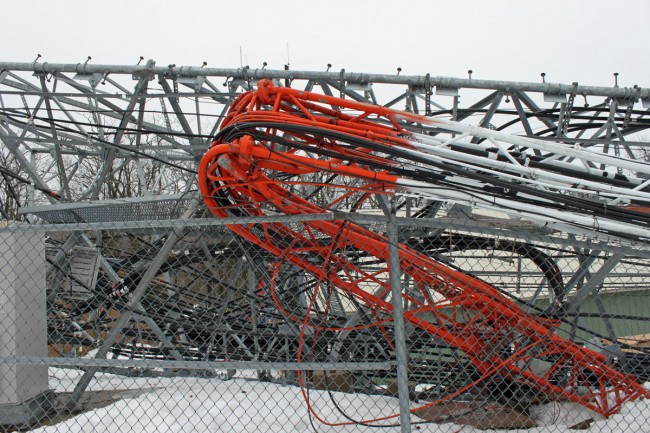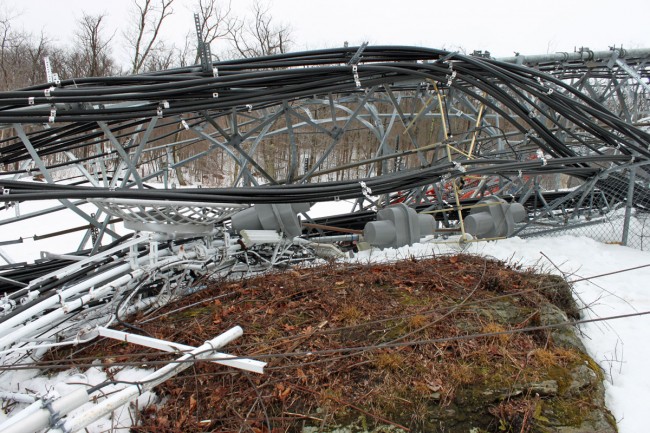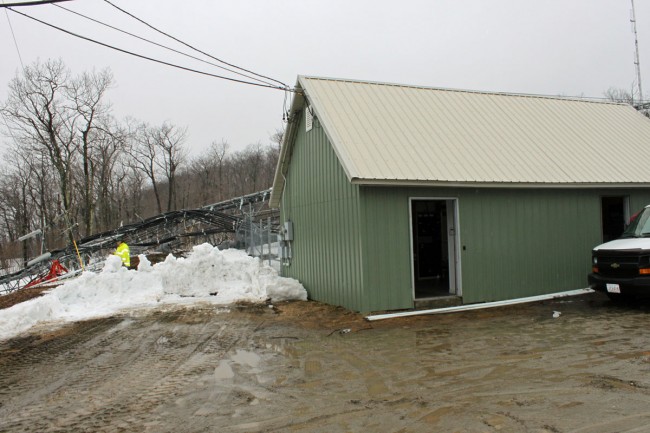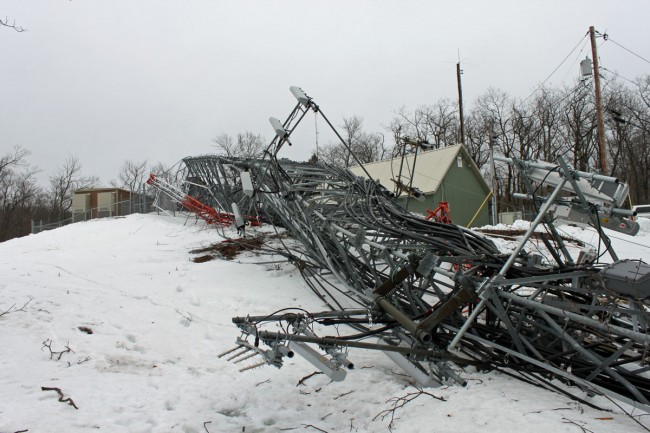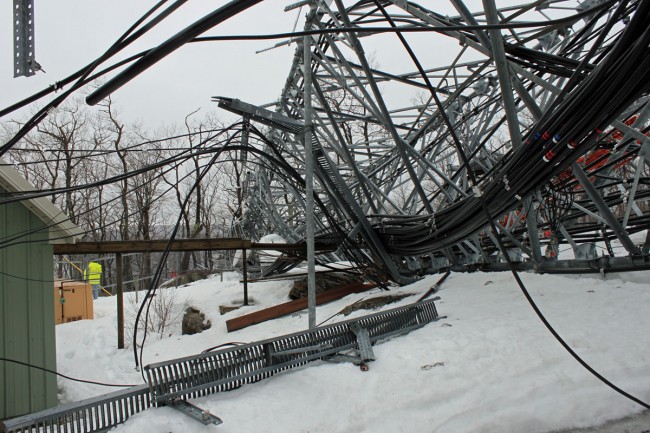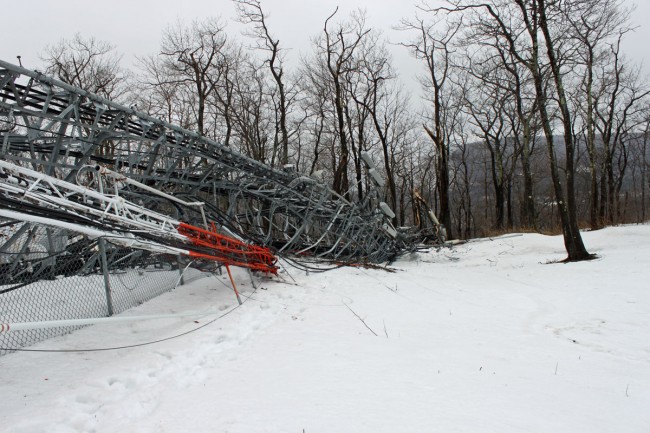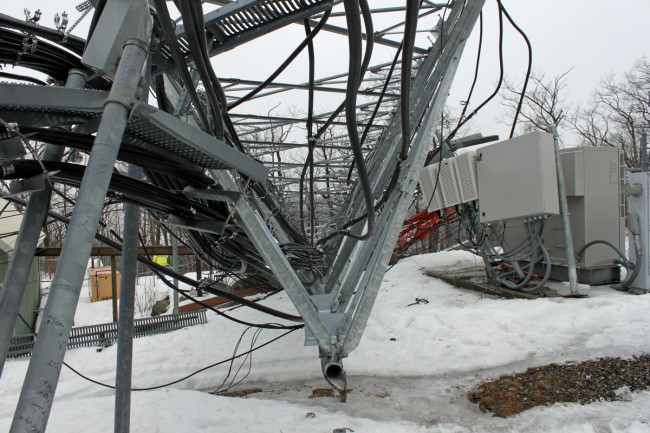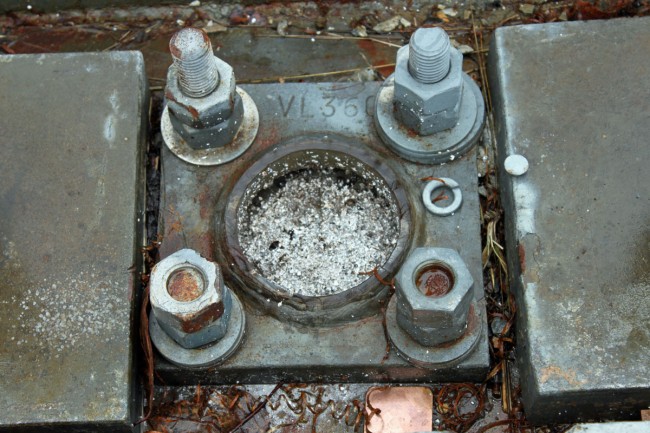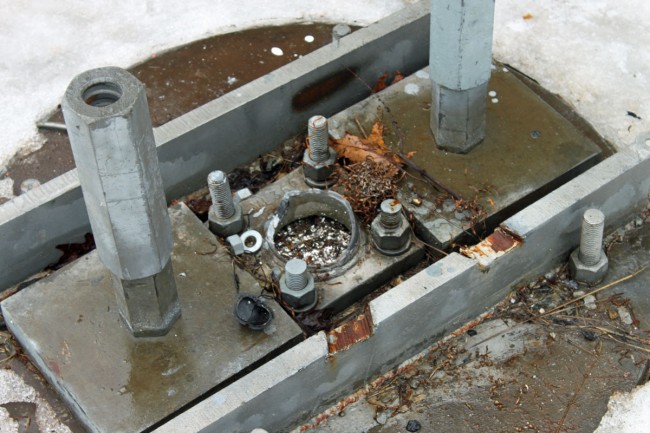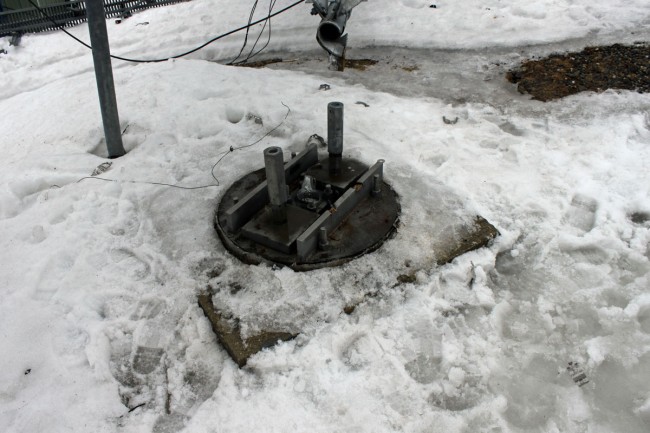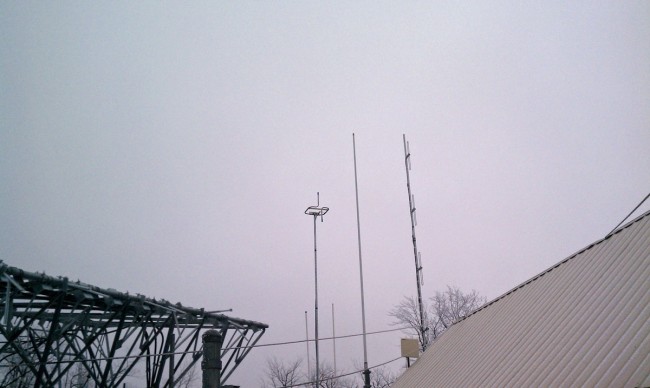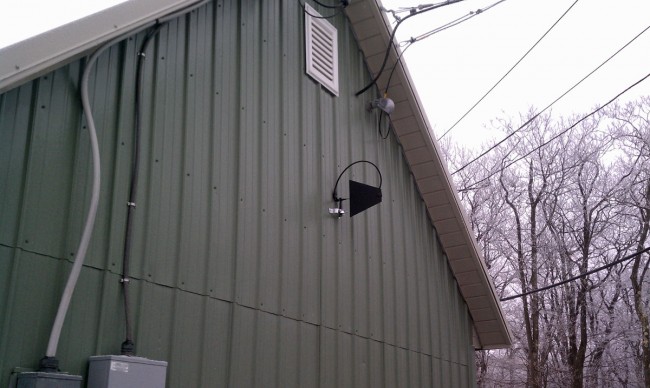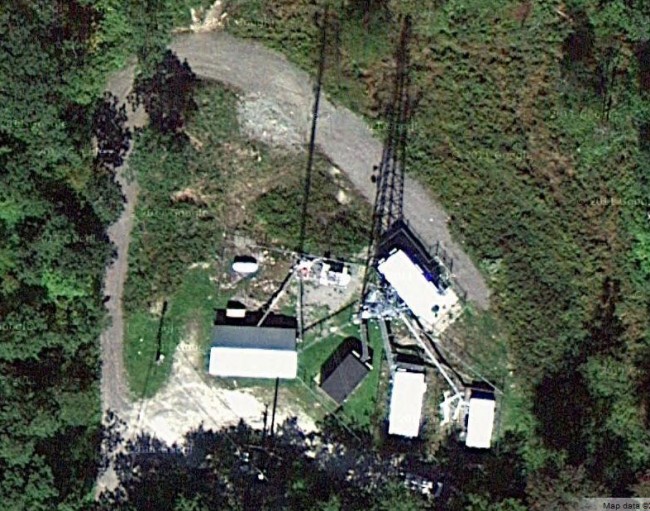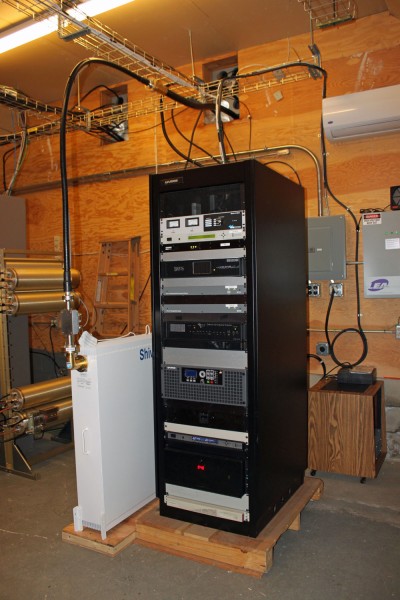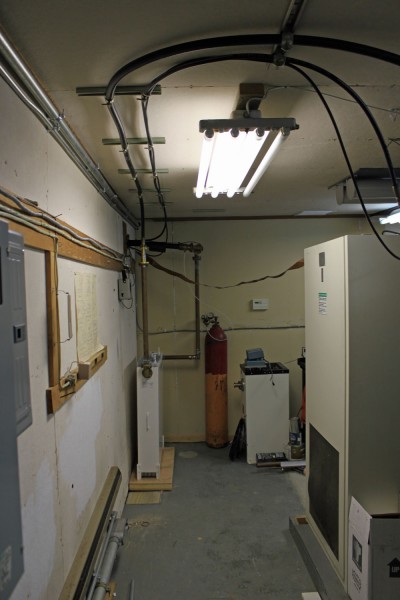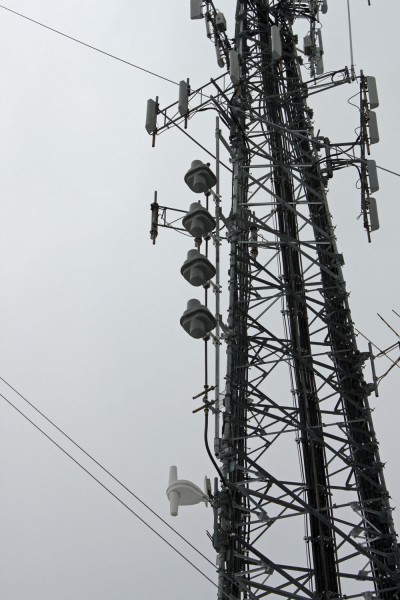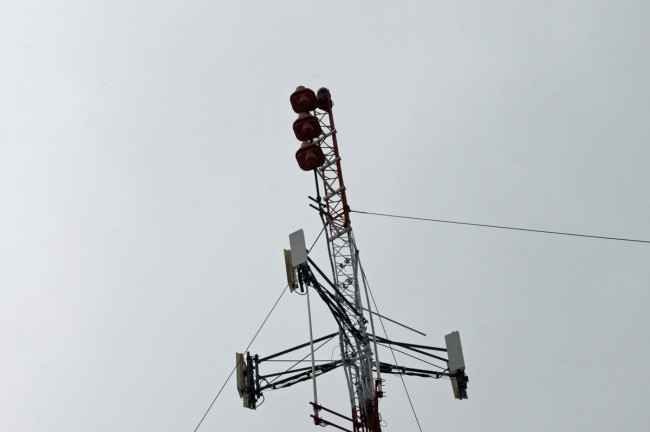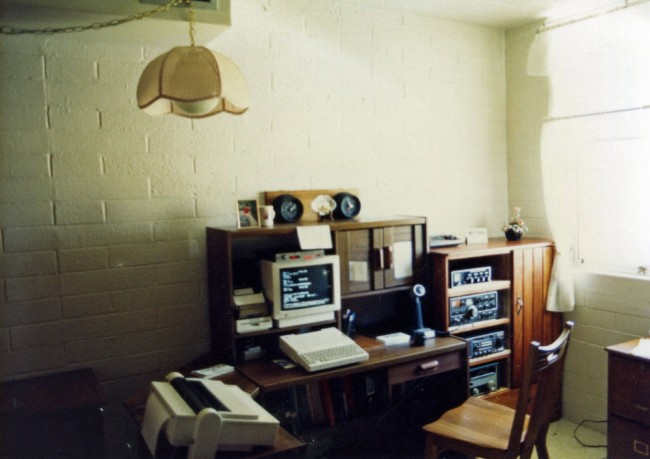During the digital TV conversion in the US, all broadcast television stations installed new transmitting equipment and antennas. Most stations ended up on a different frequency than their original analog channel. In Albany, New York, all of the TV stations moved to a common transmitter site and installed their antennas on a single tower.
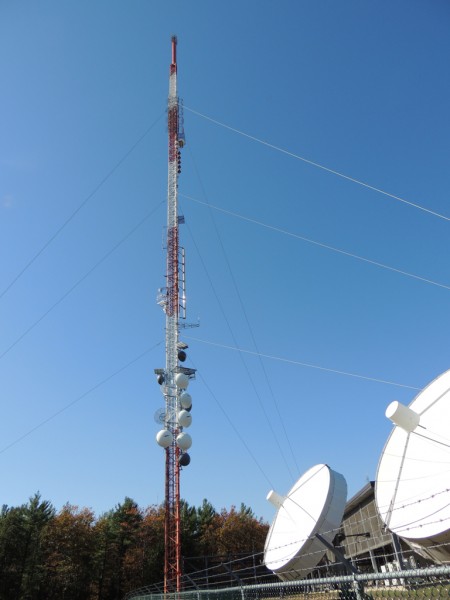
For more on the Albany DTV site, check out the NECRAT page: www.necrat.us/albdtv.html
So, what happened to the old Analog TV sites in Albany?
For the most part, after the analog turn-off on June 12, 2009, the sites have sat empty. Such is the case with the former WMHT site.
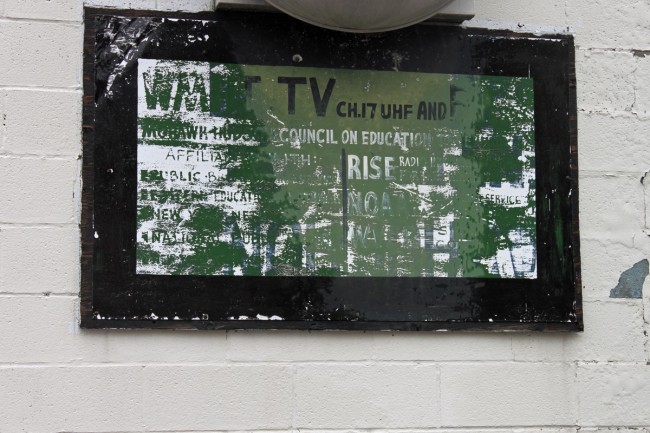
This old sign about sums up the end of analog television.
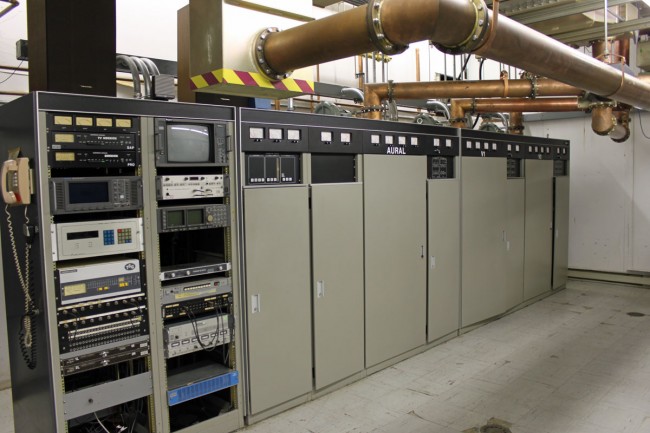
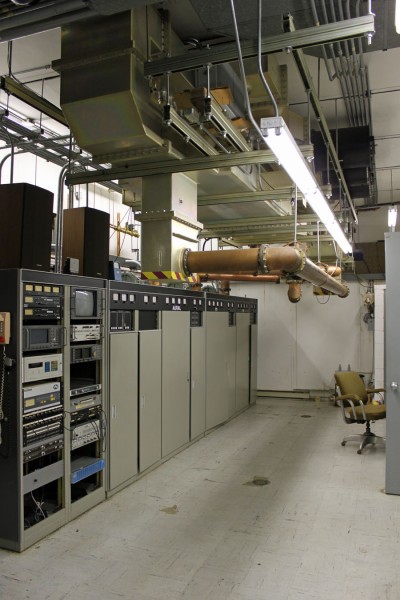
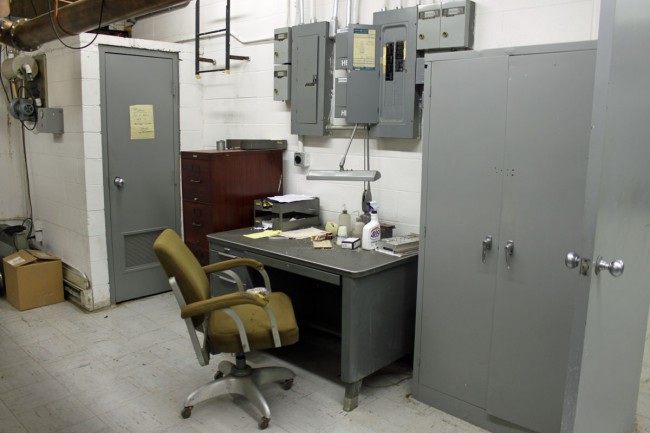
The former transmitter operator desk. The maintenance log is still open. From the looks of things, they opened the circuit breakers and walked away. Everything remains intact from the antenna to the klystrons and exciters. It does appear that the coolant has been drained from the system. Other than that, it seems like the whole thing could be restarted with minimal effort.
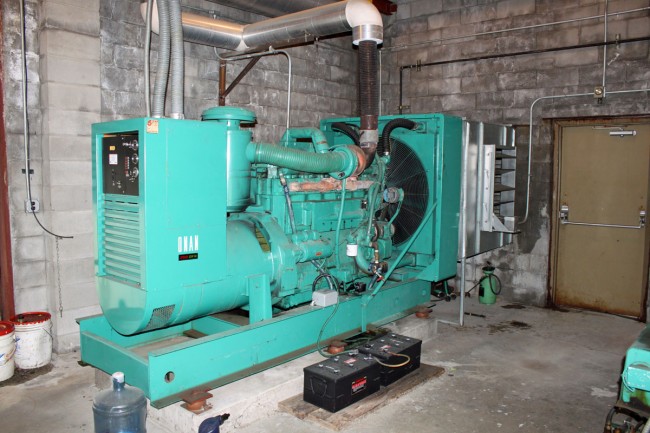
There were two Onan DFN 350 backup generators. With a TV transmitter, running the cooling system after shutdown is vital. The idea here is that both generators in parallel could run the whole station, if one generator failed, then the cooling system would still run and cool the klystrons.
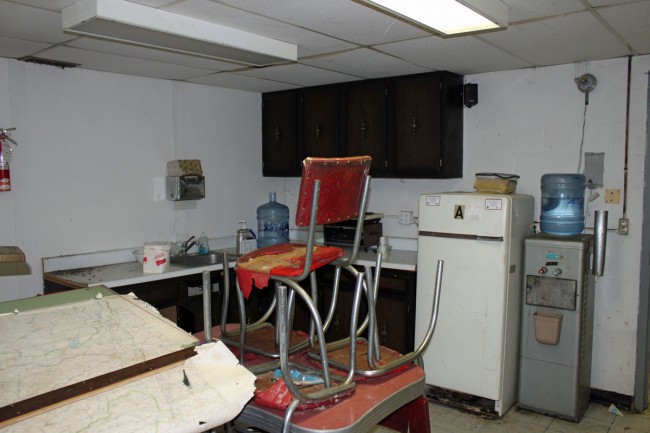
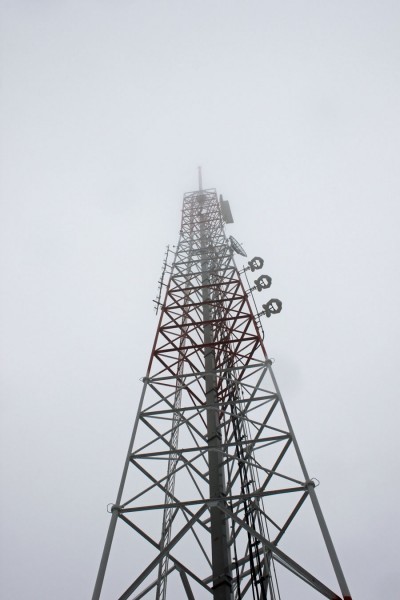
The former WMHT tower, which currently holds the WVCR-FM, WXL-34 (NOAA weather radio), and W44CT-D (Three Angles Broadcasting) Low power TV transmitter.
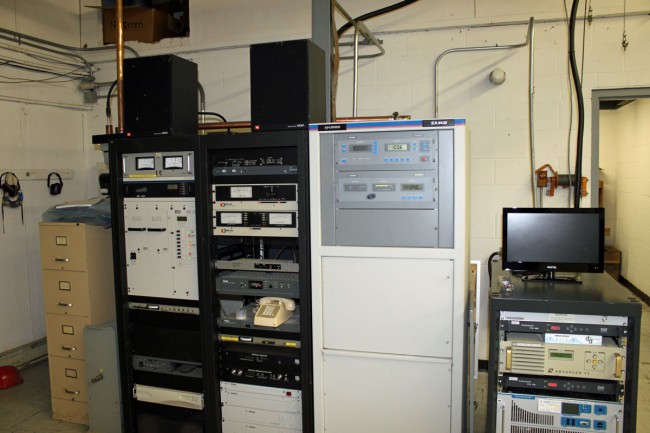
These equipment racks and the NOAA weather radio transmitter in the other room are the only active equipment at this site.
WMHT-TV Chanel 17 (488-494 MHz) was signed on 1962 from this site. The Comark transmitter was installed in 1984. The station’s analog ERP was 2000 KW visual, 200 KW aural.
It is an interesting site.

